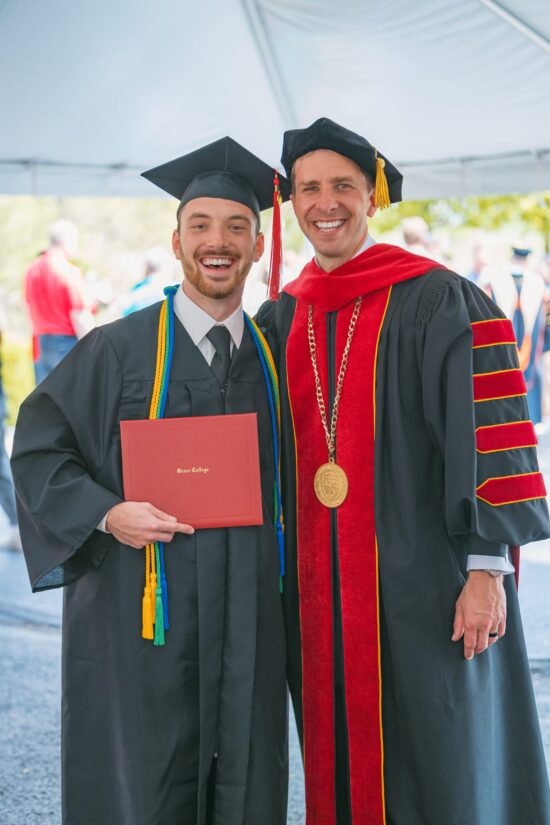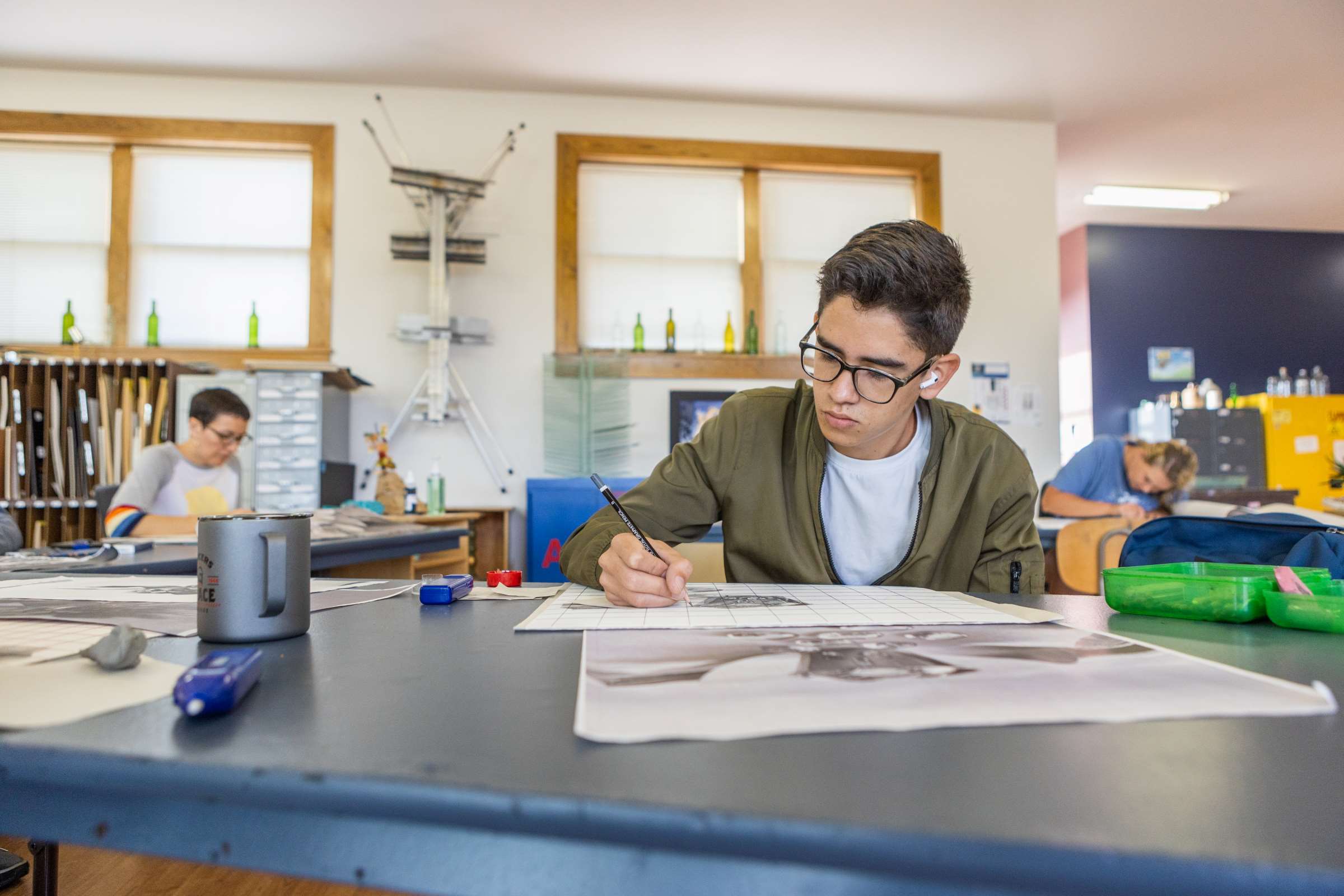By Maria Ignas (BA 25)
Are you the person who’s never caught without a sketchbook in your hand or a design app open on your phone? A degree in visual communication design may be for you. This program trains creators to employ the basics of art and design across both traditional and digital media.
Many visual communication design programs come with concentrations such as graphic design and illustration. Understanding the differences between the two will help you decide which concentration best suits your interests and abilities.
Read on to find out the differences between graphic design and illustration, and take a quiz at the end to determine which concentration is right for you!
Graphic Design
Graphic design uses the elements of design to convey a message effectively and creatively. It emphasizes an intuitive, cohesive style that an audience can understand.
Graphic designers use artistic elements to communicate relevant information.
Graphic designers primarily use digital software in their everyday work. In a graphic design concentration, you’ll learn the fundamentals of art and design, considering how elements like typography and color schemes affect audience reception. Your graphic design courses will train you to navigate design software that you’ll use in your career.
If designing a website, advertisement, or brand logo gets you excited, a graphic design concentration may be for you.
Illustration
Illustration uses art to represent a concept and to tell a story. It involves artistic, expressive images that resonate with an audience. While many conflate illustration and graphic design, the goals and methods of the field differ.
Graphic design uses text and images to present a clear message, while illustration focuses on visuals that represent a message or tell a story. In other words, graphic design is about creative, clear communication, while illustration is more about powerful storytelling.
Some illustrators use traditional media, like colored pencils and fine-point pens. Many others take advantage of digital illustration software.
In an illustration concentration, your courses will train you to use a variety of media to produce dynamic, technically excellent art. If you love creating compelling images that relay a narrative, consider a concentration in illustration.
Still uncertain which VCD concentration to choose? Take this quiz, keep track of your results, and find out which one best suits you!
1. What gets you the most excited to create?
- A website, logo, or magazine layout
- A painting or drawing
2. What materials do you prefer to use?
- Any design software that lets you play with photo collages and typography
- Either traditional media, like colored pencils and Copic markers, or digital drawing software
3. How would you like others to describe your art?
- Cohesive and attractive
- Original and evocative
4. Pick one feature you value in artistry
- Balance
- Storytelling
If you answered mostly A’s…
You sound like a great fit for a graphic design concentration! You’ve got an eye for design, and you know how to communicate any message with a harmonious, intuitive style.
If you answered mostly B’s…
Consider an illustration concentration! You’re a storyteller at heart. Whether creating traditionally or digitally, you love creating art that moves an audience.
At Grace College, no matter which concentration you choose, you’ll learn the technical skills necessary to create exceptional art and designs for any purpose.
What opportunities do graphic design courses offer? Read about VCD major Ethan Jordan, who recently designed Kosciusko County’s Parks and Recreation logo.
Discover the visual communication design major and its graphic design and illustration concentrations.




